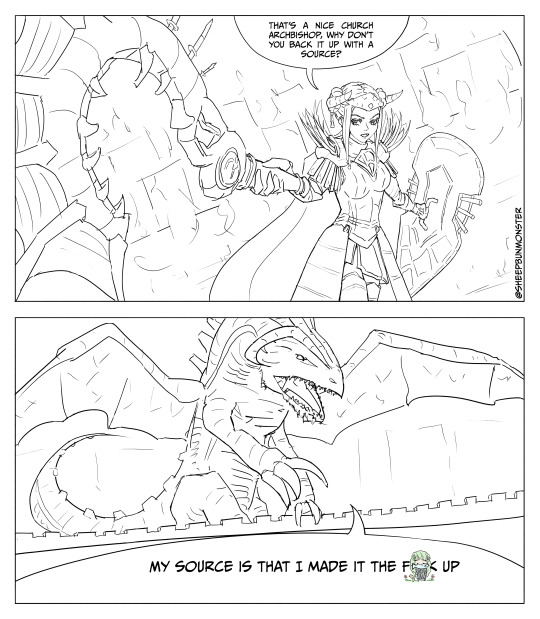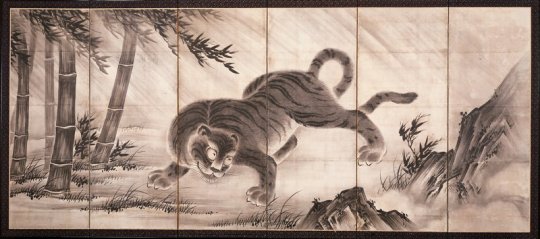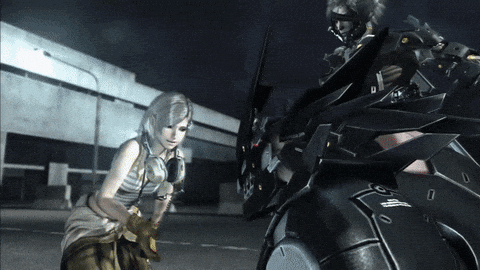#yes this is the mgs revengeance meme
Text

#fe3h#fe3h comic#fire emblem three houses#fe3h edelgard#fe3h spoilers#fe3h immaculate one#fe3h fanart#fe3h flayn except she's here for convenient censoring#sorry got lazy and didn't want to color the rest of it#edelgard my beloved#yes this is the mgs revengeance meme#fe3h fancomic#my art#edelgard von hresvelg
352 notes
·
View notes
Text

No spoilers
It's funny that despite all my love for the game, I didn't have any inspiration to write a review. Because how can you put into words the feelings it causes? Yes, the gameplay is like an endless dance that flows and twists the player into its vortex. Yes, every second in this game is melodious like a song, cutscenes are apt like rhymes in poetry, and the outcome suffered in the battle with the last boss gives a feeling of exaltation. And although each work is a matter of taste and everyone sees something different in the game, it seems that the audience has finally matured to understand the genius of Metal Gear Rising: Revengeance.
It's a bit unfortunate that the game is mostly recognized by memes, which makes its perception superficial and not serious. On the other hand, a meme can only be understood with full context, which requires playing through the game. The context, in turn, gives a deeper understanding of the work. And therefore, even such popularity can attract new fans of the series. I also think that the example of this game shows how much the game industry has in common with high culture, not mass culture. Most games acquire their meaning over time, rather than gaining popularity as a phenomenon of consumer culture, quickly fading into obscurity. So in this review I will try to explain why MGRR will remain a classic for generations of gamers to come.

I'm happy that Metal Gear Rising was my first MG game. It does not require extensive knowledge of the history of the franchise. Therefore, discovering the character of Raiden and the meaningful content of the game, you want to get to know this universe more closely to understand its essence.
There is a perception that MGRR is not Hideo Kojima's canonical Metal Gear, so you won't be able to touch his genius in this game. In fact, it is not quite so. Although at some point the project was given to PlatinumGames, its initial idea and main character remained in the spirit of the good old Metal Gears, which is felt if not in the combat system, then certainly in the ideas, narratives and used means of artistic expression inherent to Kojima. In the game we have some elements of stealth, expressive cutscenes with unexpected angles, the philosophical basis of the plot and, of course, the codec - Kojima's greatest invention in video games, in his own opinion. It is interesting to observe how his principles continue their life in subsequent projects, changing and adapting to the needs of the time and the content of the games. Yoji Shinkawa, an integral part of the tandem, also contributed to the creation of the game. So if you look at it from a certain angle, MGRR is pretty much canonical Metal Gear.

Yep. I spent 20 mins of my life to find Kojima and Shinkawa in credits. They both are present.
One of the key features of MGRR, inherent in the MG series in general, is its ability to combine very different and, at first glance, absurd things. The game constantly balances between philosophy and satire, cringe and seriousness, kitsch and incredible aesthetics. This feeling is very similar to the first experience of getting to know anime. To a person out of context, individual episodes of anime can seem strange and wild, and a single series can make the entire industry seem like low-level geek culture. In short, this cultural phenomenon is shrouded in a lot of prejudices and stereotypes, which is caused by a different cultural context than yours (unless you are Japanese).
MGRR feels very Japanese, even though the setting of the game (like all the games in the series) has nothing to do with Japan. The very first mission resembles a traditional Japanese engraving, on an endless sheet of which heroes from ancient myths confront each other. I love finding parallels between games and art forms. Vampyr similar to a theater play, L.A. Noire is to the detective film, and Mafia is to the noir novel. And although I have repeatedly emphasized that Kojima brought video games closer to cinema through MG, I want to go deeper in the search for aesthetic parallels in Rising. This game resembles a mythological epic with its inherent trope about the hero's journey, the endless fight against evil and, of course, the worldview of a particular people, its philosophy.

In many mythologies, events take place in 'eternal' space and stretch endlessly in time. A dark force always appears to destroy the world, a light force always accepts its challenge. After all, the world is maintained thanks to their balance, the delicate balance of yin and yang, which should not be disturbed in any way. That is why evil exists. And that's why good always wins it. In general, most games with a plot, having a certain literary basis, use this pattern. But in MGRR, this principle seems to be embodied literally, only the actors are changed: robots and cyborgs take the place of deities and spirits. Powerful forces converge in a predestined battle, but we know its outcome in advance. Therefore, the most interesting part of this whole action remains the confrontation process itself. What is heard on earth when the titans are fighting in the sky? What does the Dragon say when he meets the Tiger?


Doan (Yamada Yorikiyo), Japanese. Tiger and Dragon, ink on paper, around 1560. The Minneapolis Institute of Art. Source: https://www.roningallery.com/artists/Kuniyoshi
'RULES OF NATURE'
The rules of nature are one of the key elements of the game. The problem of the main character's struggle with the natural state of things and their phenomena is embodied in many details and in the mythological background in particular. In primitive beliefs, people of all cultures addressed the forces of nature that they could not directly change, but that they could influence and interact with. Perhaps this is one of the reasons why Raiden fights not with abstract thieves, but with destructive, unpredictable and dangerous natural phenomena.
In the game, we have a group of Winds of Destruction - cold-blooded mercenaries who do dirty work. In the system of Japanese beliefs, in particular Shinto, spirits-deities called kami have a clearly defined good/bad characteristic. At the same time, they also have an opposite side to it. Therefore, people can interact with kami in different ways depending on their needs. Before his battles with the Winds, Raiden has moments of revelation with each of them, through which he discovers new truths. These conversations also show that if you judge the state of affairs from the point of view of the criminals themselves, their views also have a grain of rationality. They have come to choose their craft in a certain way, have their own beliefs and principles, and therefore it is difficult to call them unequivocally bad. Raiden himself is more like the Winds than he would like.

One of the most magical and, at the same time, one of the most dangerous and destructive forces of nature is embodied in the image of Raiden. In Japanese mythology, Raijin is the god of lightning. A variant of Raiden-sama's name can literally be translated as Mr. Lightening Bolt. But the most interesting thing is not that. According to the tradition of Japanese Buddhism, Raijin and his brother, the wind god Fujin, were originally evil demons who fought bitterly with the Buddha. As a result of the battle between the Buddha's heavenly army and the demons, Fujin and Raijin were captured, repented and now serve good as Buddha's guardian deities. To say how brilliantly accurate this tribute is - is to say nothing. Like Raijin, in the MG series, Jack went from a punishing dark force to a protective light force. At the same time, he does not depart from his original nature of destroyer and killer, but only directs energy in the right direction.

Folding screen depicting Raijin (left) and Fūjin (right). Tawaraya Sōtatsu, 17 century. Raiden-sama usually depicted as white demon, which also resonates with one of Jack's names - White Devil.
One could say that such a similarity between the fates of Raijin and Jack was only a coincidence. After all, this is where Joseph Campbell's theory of the monomyth, laid out in his 1949 book The Hero with a Thousand Faces, takes place. Campbell, researching the myths, fairy tales and legends of the peoples of the world, came to the conclusion that most of these stories rely on a common plot structure, which he called the monomyth. Since the modern literary tradition is drawn from the oldest literary forms, it still retains the most common and established models, albeit in modified forms. And therefore, the similarity of the paths of heroes in myths or literary works is only a consequence of an established tradition.
But Metal Gear wouldn't be Metal Gear if it weren't for its attention to details. As we know, in myths, things are rarely clear-cut. Raijin often fights with his brother Fujin. He is also depicted in the company of Raiju, a thunder beast or thunder demon that also acts as his animal totem, usually appearing in the form of a dog or wolf. Does this remind you of anyone? Another minor but interesting detail is that Raijin has a son, Raitaro, who is another deity of thunder.

Although Raiju is a companion of Raijin, it can act independently. During thunderstorms, Raiju descend from the sky, accompanying lightning to strike at trees and houses, causing disasters. Thus, Raiju attacks were also believed to be a form of divine punishment: those whose homes were struck by lightning were “suffering the wrath of the Raiju”.
The dystopian environment of MGRR tries to imitate the natural state of things and imitate nature itself not only at the expense of the mythological core. There are more direct allusions embedded directly in the design of robots and cyborgs. The most obvious is the already mentioned Blade Wolf, in which the prototype of the dog is easily guessed. Amphibians and insects, dinosaurs and birds, ungulates and predators inhabit the unexplored hostile spaces of MGRR. It is noteworthy that some of the mechs in the game are present in the MG series not for the first time. Even in previous games, you could find numerous modifications of Metal Gear RAY, Gekko or canine-like robots. The entire MG series in one way or another introduces allusions to the animal world into the design of the characters. On the one hand, this is a fairly obvious design approach. On the other hand, it adds more depth to the game's lore. The concept of human imitation of nature is a red thread through all Metal Gear, opening a kind of philosophical questions, and also conveys the idea of "naturalness" of those changes taking place in the alternate reality of the game.
Animal traits are evident in robots' behavior and appearance, such as design elements, mannerisms, sounds, etc. It would seem that this is enough to give the player information about what they are dealing with. But the designers give a deeper explanation of how these mechanisms work. They are endowed not only with the features of living beings. They have a similar 'body structure' and even blood likeness. From a practical point of view, most of these details do not make any sense.

From the perspective of game design, this is one of those elements that works on a subconscious level with the player's imagination. Blazing his way through enemy valleys, Raiden destroys more than just robots. They bleed, suffer and make shrill sounds like living animals. They seem to embody the next, albeit artificially created by man, stage of evolution. They are only a part of the usual state of things, where "wind blows, rain falls, and the strong prey upon the weak". Obviously Raiden is a predator in this story. Kill or be killed. At the same time, he is a victim. A victim of his own beliefs and memes, obeying them, he tries to change the natural order, to destroy long-established truths for the sake of the highest good. But, as we found out, good and evil will always exist side by side. Because as one little-known philosopher once said,

About memes, honor and war in the next part of the review~
Credits:
Japanese Tiger and Dragon. Minneapolis Institute of Art
2. RAIJU: The Thunder Beast Yokai
3. Gekko. Metal Gear Wiki
4. Raijin. Wikipedia
#metal gear#mgrr#metal gear rising#metal gear rising revengeance#raiden mgr#mgr raiden#video game review#video games#gaming#japanese mythology#mythology#my articles
40 notes
·
View notes
Text
Sam when Raiden first revealed his “Jack the Ripper” sona to him:

#mgr#am i making memes about a game 6 years after the fact? yes#metal gear rising#raiden#jetstream sam#sam#metal gear#mgs#metal gear solid#metal gear rising revengeance#raiden x sam#hideo kojima
585 notes
·
View notes